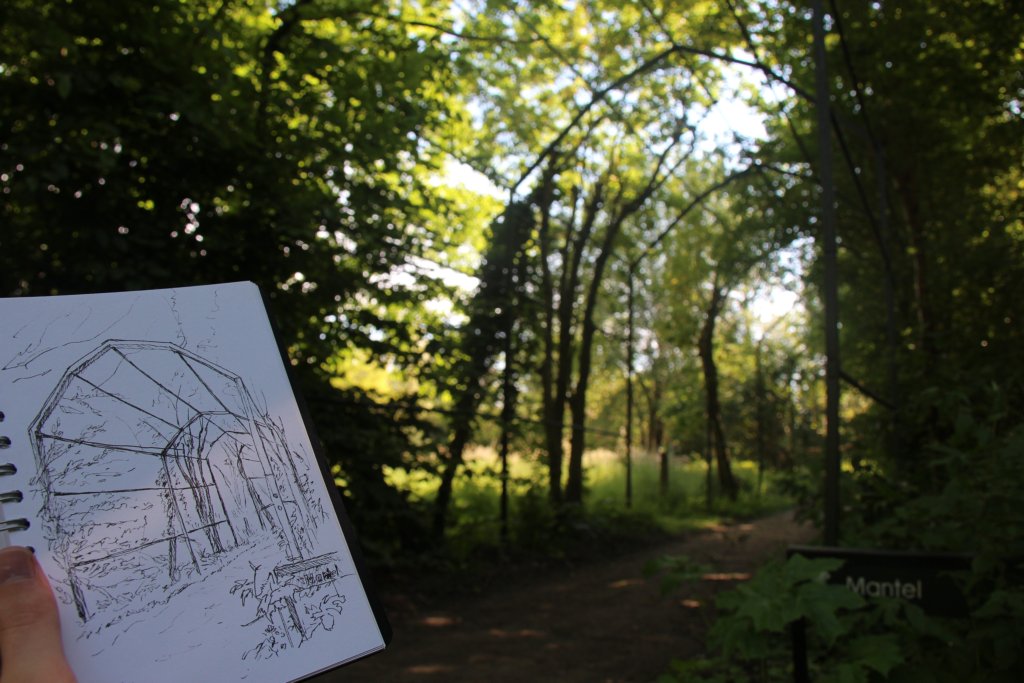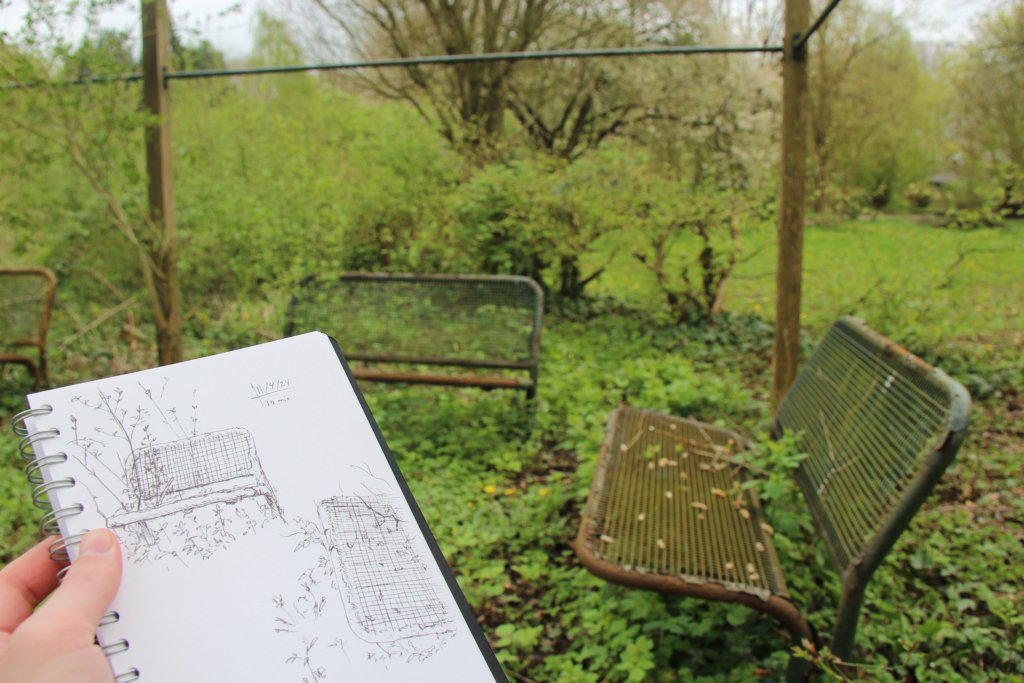Youp Ferket
Humans impact our planet in many ways, with abandoned places and ruins being some of the most interesting sites for both us and many species. A closer look at these abandoned spaces reveals lessons designers can learn about how a design can have both human and non-human users. Yet designing to restore these abandoned spaces for multispecies users comes with challenges, such as how to share the stage with the other species involved throughout the design process. Sketching can facilitate this repositioning of the human designer by helping to pull back the curtain on their perspective and those that exist within a design space. What possibilities can you see emerging from ruins?
The sketching method has emerged as a way of supporting the orientation of the design space and creating possibilities. The process begins by finding a location and doing observational sketches, at first from a distance, followed by close-ups. The second stage is where the imaginative sketches are done. This includes drawing from memory, reconfiguring noticed elements, imagining the perspective of the non-humans in the space, and potential design interventions.
Collaging these sketches and analysing them helps reveal what the designer found interesting, partially by considering the composition, linework, detail and even time spent. This method provides designers with a tool that makes their perspective explicit, as well as illustrating any limitations and the gap between it and non-human perspectives. As a way of noticing, it offers immersion, time to discover things that happen at different timescales, and an awareness of what cannot be captured in the sketches.
Noticing in the context of research usually remains an observational act. Using this method provides the steps to intervening through design. Understanding the past and present of a ruined space can lead to new understandings of what it has made possible in the future. Including more than just the human perspective in imagining these futures is essential, yet it's easier said than done. Sketching in this way can support this repositioning of the designer at the start of the design process and throughout the following phases. This project serves as an exercise in what we can do to move forward in a world full of ruins.


